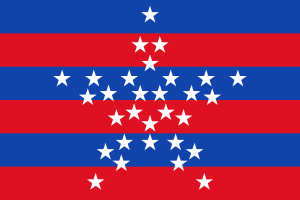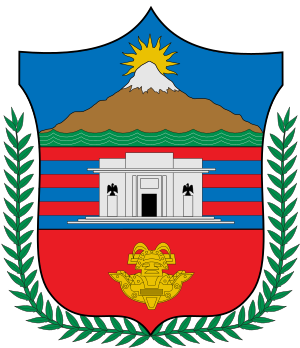Magdalena Department facts for kids
Magdalena Department is a special place in northern Colombia. It sits right by the Caribbean Sea, which means it has beautiful beaches and a warm climate. The capital city of Magdalena is Santa Marta. This department got its name from the mighty Magdalena River, which is one of Colombia's most important rivers.
Contents
What is Magdalena Department?
Magdalena is one of the 32 departments that make up the country of Colombia. Think of it like a state or province. It's located in the northern part of Colombia, touching the Caribbean Sea. This location makes it a key area for trade, tourism, and nature.
Geography and Nature
Magdalena Department has a very diverse landscape. You can find everything from sunny beaches to tall mountains.
The Caribbean Coast
The northern part of Magdalena is all about the Caribbean Sea. Here, you'll find long stretches of sandy beaches and clear blue waters. Cities like Santa Marta and towns like Taganga are popular spots for visitors who love the ocean. The coastal areas are usually warm and humid, perfect for beach activities.
The Magdalena River
The department is named after the Magdalena River, which flows through it. This river is super important for Colombia. It helps with transportation, farming, and provides water for many communities. The river also creates rich, fertile lands along its banks, which are great for growing crops. Sometimes, the river can even flood, as it did in 2005.
Sierra Nevada de Santa Marta
Part of the amazing Sierra Nevada de Santa Marta mountain range is in Magdalena. This is the highest coastal mountain range in the world! It's home to unique plants and animals, and even some indigenous communities. The mountains offer a cooler climate and incredible views, a big contrast to the hot coast.
Ciénaga Grande de Santa Marta
Another important natural area is the Ciénaga Grande de Santa Marta. This is a huge coastal lagoon system. It's a mix of fresh and saltwater and is home to many different kinds of birds, fish, and other wildlife. It's a very important ecosystem for the environment and for the people who live nearby and fish there.
Tayrona National Natural Park
One of Magdalena's most famous natural treasures is the Tayrona National Natural Park. This park combines beautiful beaches, tropical forests, and ancient ruins. It's a protected area where you can see amazing wildlife and enjoy nature. It's a unique place where the mountains meet the sea.
History of Magdalena
Magdalena has a rich history, especially because of its capital, Santa Marta.
Santa Marta: A Historic City
Santa Marta is one of the oldest cities in South America, founded by the Spanish in 1525. It was an important port during colonial times. Many historical events happened here. For example, the famous South American liberator, Simón Bolívar, spent his last days in Santa Marta at a place called the Quinta de San Pedro Alejandrino. You can visit this historic site today.
Early Settlements
Before the Spanish arrived, the area was home to various indigenous groups, including the Tayrona people. They built impressive cities and left behind many artifacts. Their history is still a big part of the region's identity.
Economy and Life
The economy of Magdalena Department relies on a few key things.
Agriculture
Farming is very important here. People grow crops like bananas, palm oil, and rice, especially in the fertile areas near the Magdalena River.
Tourism
With its beautiful beaches, national parks, and historical sites, tourism is a big industry. Many people visit Santa Marta, Tayrona Park, and other coastal towns to enjoy the sun, sea, and nature. The Santa Marta Airport helps bring visitors from all over.
Fishing
Because it's on the Caribbean coast and has the Ciénaga Grande, fishing is also a significant activity for many communities.
Culture and People
The people of Magdalena are known for their lively culture, influenced by their Caribbean location. Music, dance, and delicious food are a big part of daily life. You'll find a mix of indigenous, African, and European traditions here.
Images for kids
-
View of the municipality of El Banco from the Magdalena River
-
The Quinta de San Pedro Alejandrino, Simón Bolívar's death place.
-
The Tayrona National Natural Park, a unique ecosystem.
See also
 In Spanish: Magdalena (Colombia) para niños
In Spanish: Magdalena (Colombia) para niños















